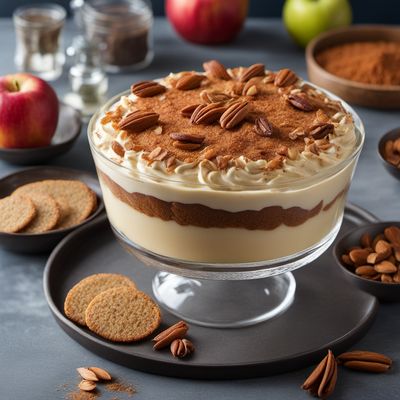
Dish
Æblekage
Ablekage
The base of the dessert is made with a layer of crushed macaroons, followed by a layer of sweetened apples that have been cooked until soft. The final layer is whipped cream, which is spread over the top of the apples. The dessert is typically served chilled and garnished with additional crushed macaroons and a sprig of mint. Æblekage is a popular dessert in Denmark and is often served during the holidays.
Origins and history
Æblekage has been a popular dessert in Denmark for centuries. It is believed to have originated in the 18th century and was often served to guests during special occasions. The dessert has since become a staple in Danish cuisine and is enjoyed by people of all ages.
Dietary considerations
Æblekage is not suitable for those with nut allergies due to the use of macaroons in the recipe. It is also not suitable for those with lactose intolerance due to the use of whipped cream.
Variations
There are many variations of Æblekage, including those that use different types of fruit such as strawberries or raspberries. Some recipes also call for the addition of rum or other spirits to the whipped cream.
Presentation and garnishing
Æblekage is typically served in a glass bowl or individual dessert cups. It is garnished with crushed macaroons and a sprig of mint.
Tips & Tricks
To make the dessert extra special, try adding a layer of caramelized apples to the recipe. This will add a rich, caramel flavor to the dessert.
Side-dishes
Æblekage is often served with a side of vanilla ice cream or a dollop of whipped cream. It can also be served with a cup of coffee or tea.
Drink pairings
Æblekage pairs well with a sweet dessert wine such as a late harvest Riesling or a Moscato d'Asti.
Delicious Æblekage recipes
More dishes from this category... Browse all »

Aamras
Indian cuisine

Aasmi
Indian cuisine

Agra petha
Indian cuisine

Aiyùbīng
Taiwanese cuisine

Ajdnek
Slovenian cuisine

Akafuku
Japanese cuisine

Akanés
Greek cuisine

Akumaki
Japanese cuisine



